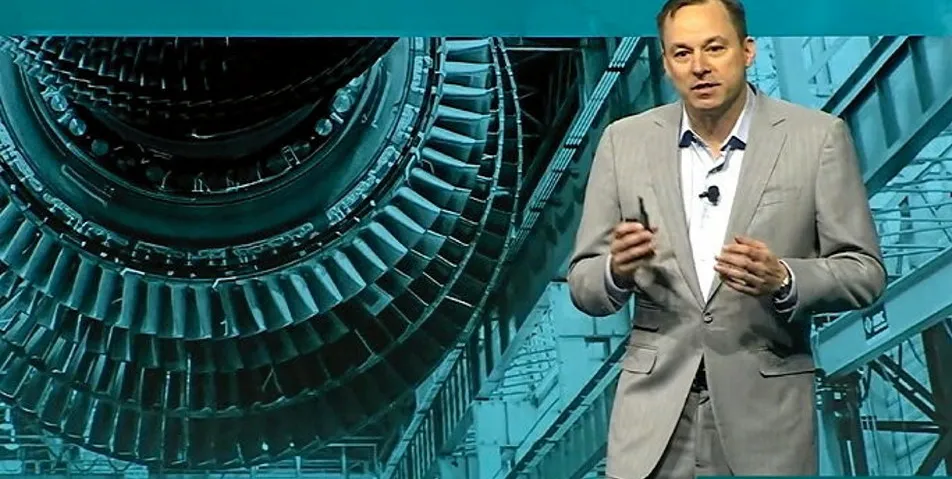GE Vernova to sharpen US onshore wind focus after spin-off as climate law spurs growth
The OEM tells investors its home market will play a key role in helping drive value creation for shareholders

After a planned spin-off early next quarter, GE Vernova expects to increasingly focus its onshore wind efforts in North America’s “attractive and growing” market, while targeting profitable high-margin turbine sales opportunities elsewhere, the OEM said in a US regulatory filing.
The OEM sells mostly onshore wind turbines and services to Organisation for Economic Cooperation and Development (OECD) member countries located mainly in Europe and North America, that also include Colombia, Japan, South Korea, and Turkey.
The Securities and Exchange Commission, an independent federal agency that regulates US exchanges, requires entities to file a Form 10 to register a class of securities for potential trading.
It is intended to provide disclosure of all relevant material information for an investor to make an investment decision. The document does not give a spin-off date.
GE Vernova anticipates its wind segment dominated by onshore will benefit from “significant margin expansion and long-term revenue growth ahead.” In part, by “demand tailwinds” driven by the Inflation Reduction Act (IRA), the landmark federal climate law signed by President Joe Biden in August 2022.
Presently a division of industrial giant General Electric, the OEM asserts that onshore wind is “executing a turnaround with an expected path to profitability in 2024 – driven by lower costs, better pricing, and more product standardization and selectivity,” as well as other impacts spurred by IRA.
The climate law is “infusing approximately $1bn per GW in project and manufacturing tax benefits,” GE Vernova told investors, underscoring how important IRA and the US market are to its onshore wind business aspirations the balance of this decade and beyond.
Political uncertainty
In the document, the OEM does caution investors that IRA application and guidance regarding tax credit eligibility “to the facts of particular renewable energy projects is subject to a number of uncertainties.”
Among them are that Congress, Department of Treasury and its tax code enforcement arm, Internal Revenue Service, may modify – or invalidate - existing guidance with respect to IRA applicability, possibly with retroactive effect.
This is a concern among some wind industry players should former President Donald Trump win a second term in November national elections and his Republican Party gain control of Congress.
GE Vernova is moving toward a more simplified wind product suite it calls “workhorse products.” For onshore, this will centre on the 2.8-127 and 3.6-154 turbines, the 3MW platform, and a 6MW platform, the largest turbine manufactured in the US.
Onshore offerings will also include turbine repowering products and remote monitoring, services, and upgrades. GE Vernova’s onshore wind fleet consists of 55,000 turbines with 117GW installed capacity, 13% of the industry’s total gigawatts globally.
Wind had $9.9bn revenue in 2023 including onshore $7.8bn, offshore $1.5bn, and LM Wind Power, which designs and manufactures rotor blades, $600m.
Revenue was 12% of the global addressable wind market - the total amount of revenue those products and services could possible generate for that segment, according to GE Vernova.
About 85% of revenue was equipment sales including new turbines and repowerings with the other 15% services, including long-term agreements and “transactional” business for spare parts and repairs in support of planned maintenance outages.
GE Vernova’s other businesses are Electrification including grid and storage, and Power that encompasses gas, hydro, nuclear, and steam technologies. By revenue, Wind ranked second behind Power ($17.4bn) and ahead of Electrification ($6.4bn).
Strategic flexibility
GE CEO Larry Culp has asserted that GE Vernova on its own will benefit from greater focus on its customers and increased capital allocation and strategic flexibility to pursue high-quality growth in its specific industries.
While GE Vernova claims 30% of the world’s electricity is generated using its installed base of technologies, the division has been a money loser for years, although signs of improvement have emerged as it readies to become a standalone “investment grade” company.
Electrification and Power are again making money, while onshore swung to profitability in the second half of last year. Still, Wind lost $1.44bn in 2023 with offshore $1.1bn in the red. It will remain under financial pressure this year, at least.
“We expect margins will remain challenged in 2024 as we execute our first tranche of Haliade-X backlog which will require significant cash use and working capital,” GE Vernova told investors. It expects improvement in backlog quality, overall profitability, and working capital dynamics after this year.
Offshore, a relatively new business with strong growth potential, will be built around the Haliade-X 15.5MW-250 turbine which can be scaled to 18MW. The business presently has 155 turbines installed in China, France, Germany, and the US totaling 1GW nameplate capacity.
Most of these are Haliade 150-6MW turbines, a design GE Vernova inherited with its acquisition of Alstom last decade that has little growth potential.
“We believe the future of our offshore wind business will be the Haliade-X 15.5 MW-250, a workhorse product,” the OEM said.
(Copyright)